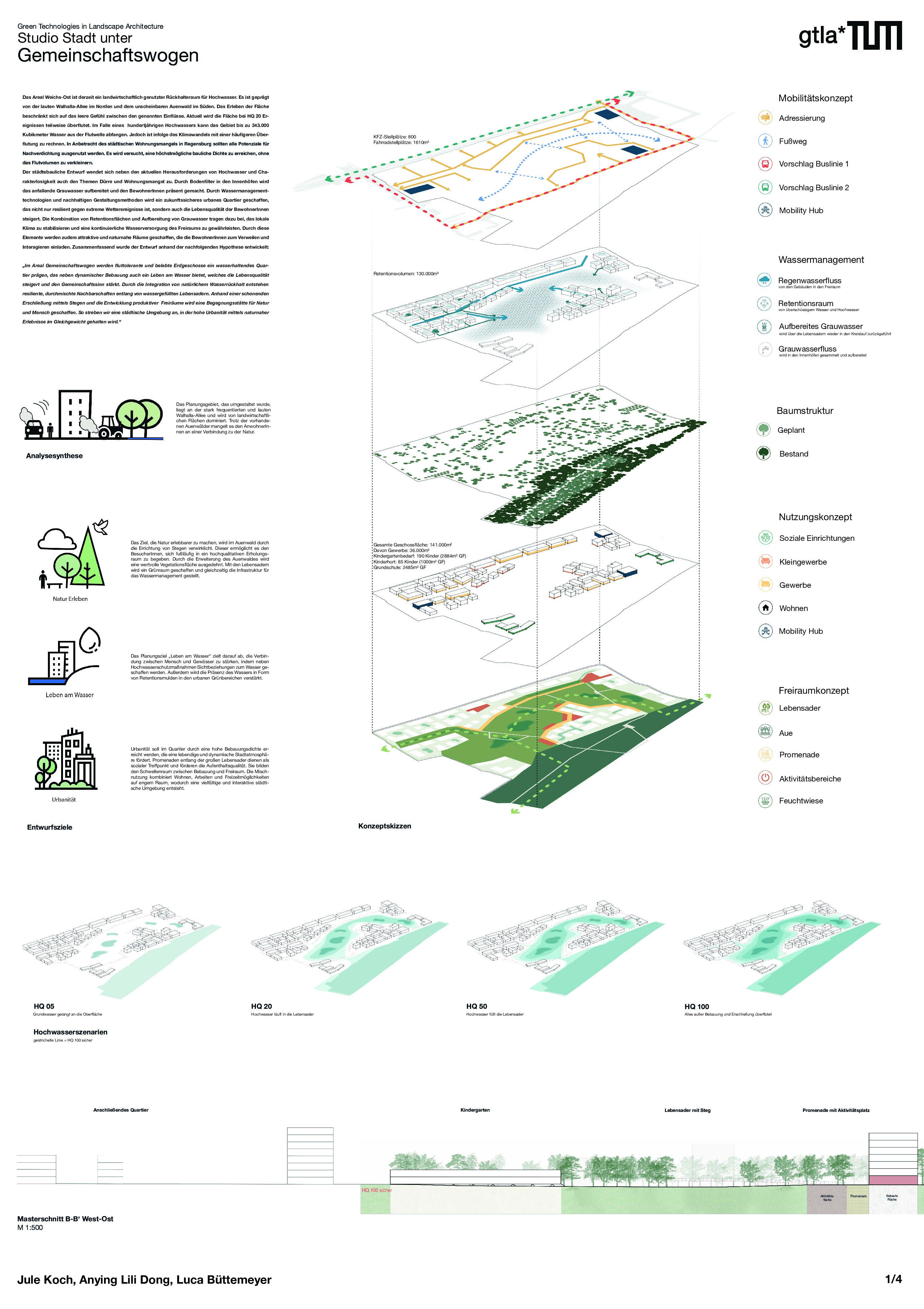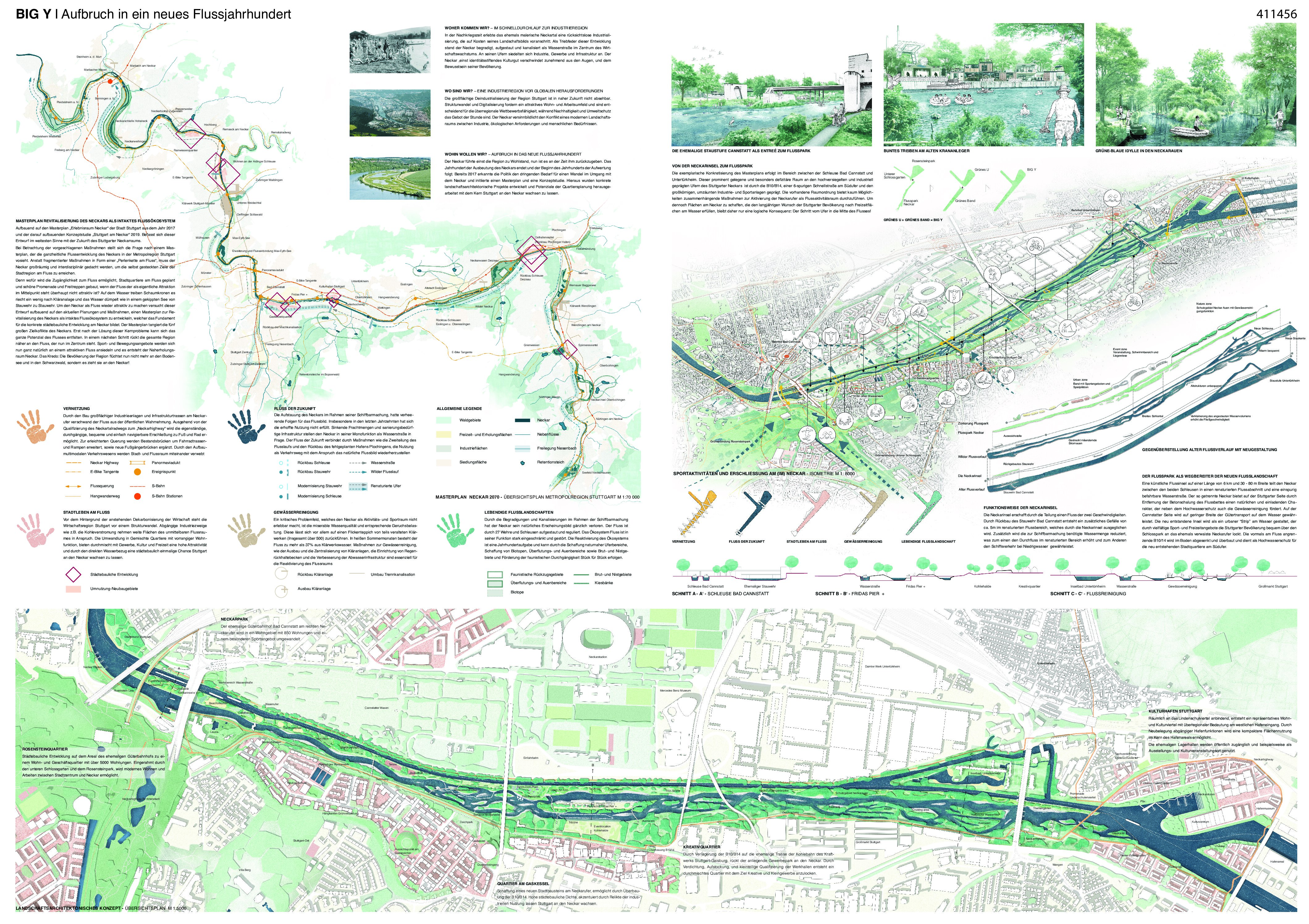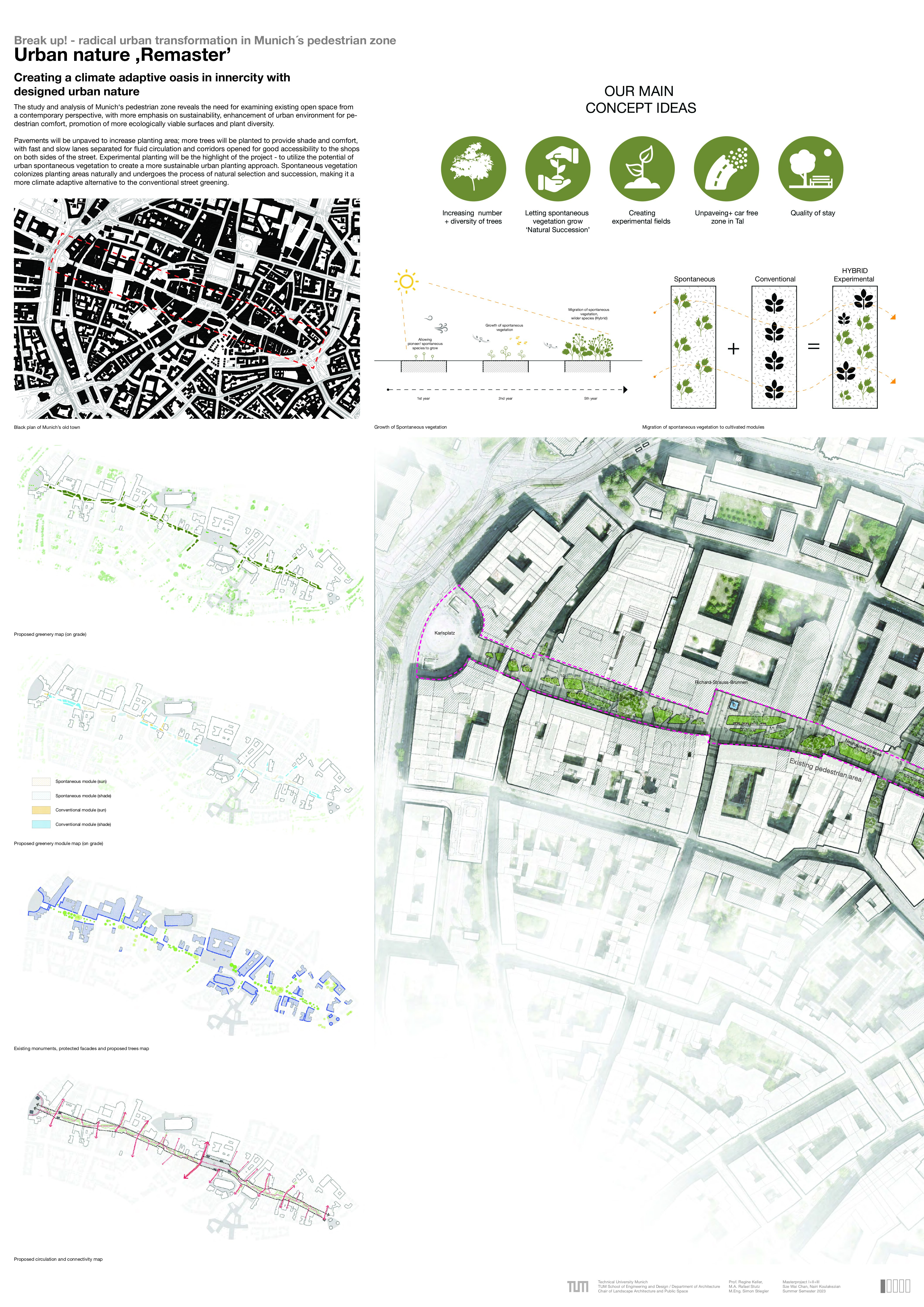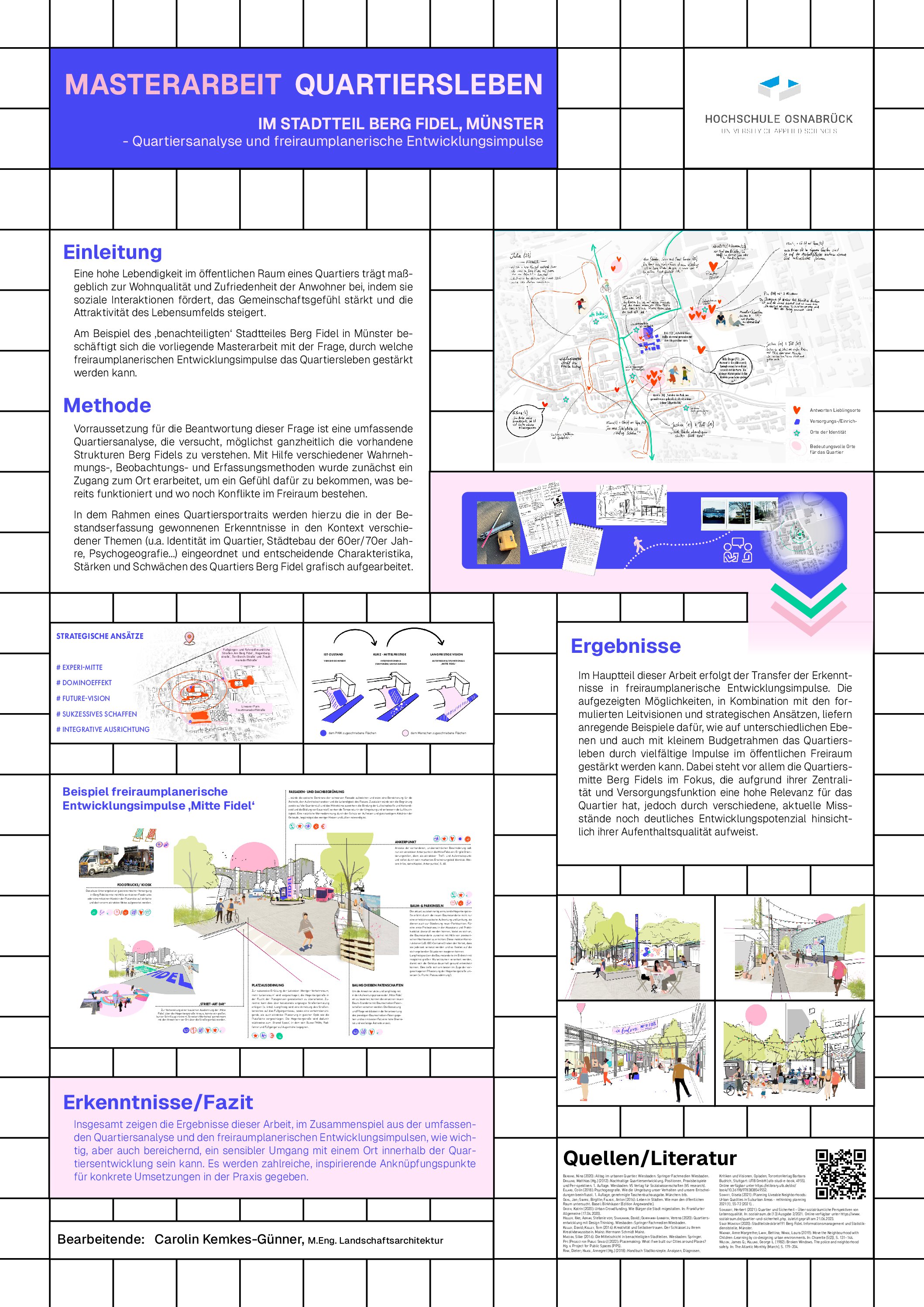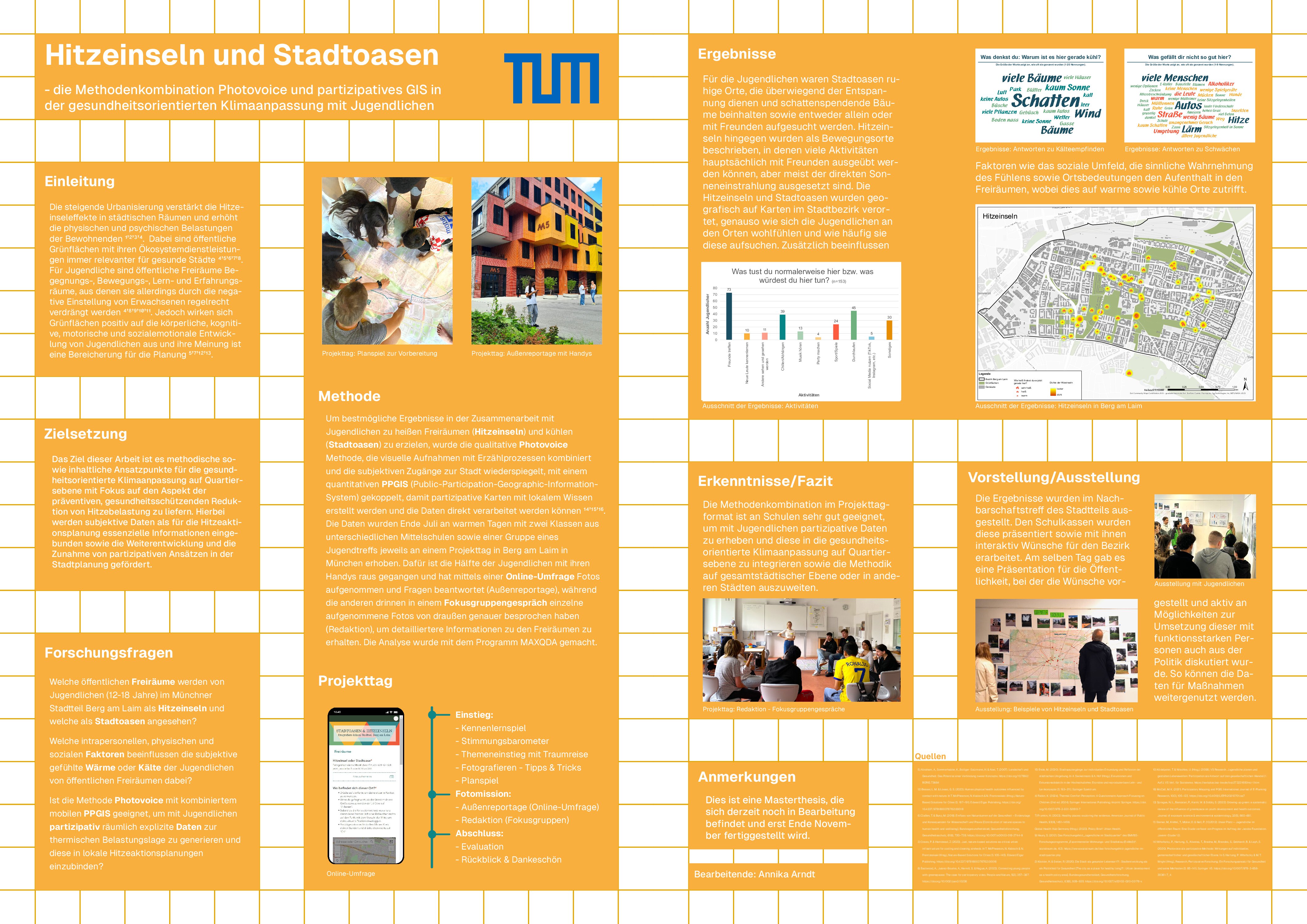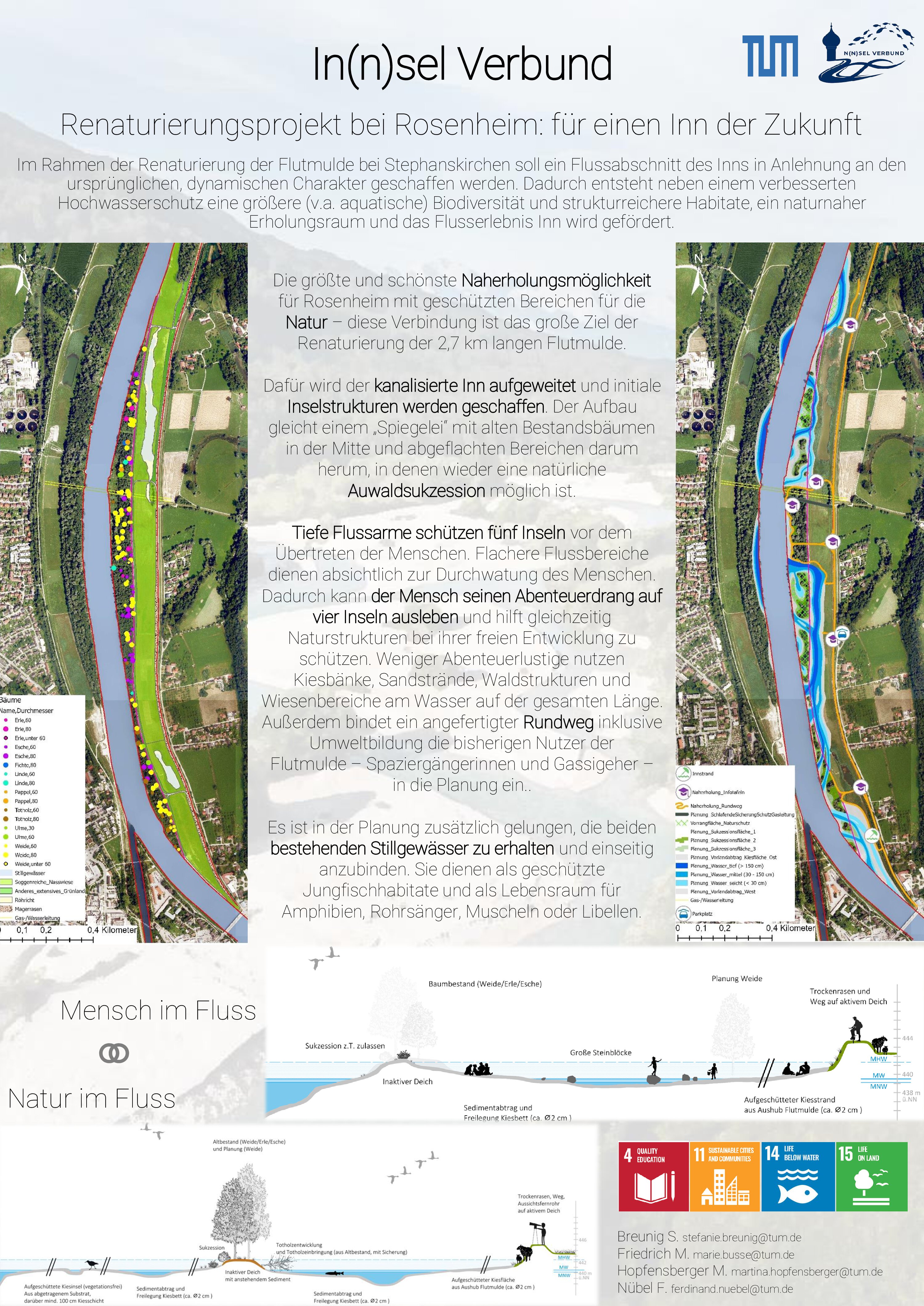Urban nature ,Remaster’
Creating a climate adaptive oasis in inner city with designed urban nature
Bearbeitende
Nairi Koulakezian, Ma. Landschaftsarchitektur
Sze Wai Chan, Ma. Landschaftsarchitektur
Bearbeitungszeitraum: WISE
Ausgangslage/Anlass
The open space analysis of Munich's pedestrian zone revealed the need to enhance ecologically viable surfaces to improve pedestrian comfort, plant diversity, and sustainable urban greening, with a focus on low-maintenance and cost-effective solutions.
Zentrale Fragestellung/Problemstellung
How can spontaneous vegetation be introduced into Munich's pedestrian zone to enhance biodiversity, promote sustainable greening, and improve public acceptance of new ecological solutions while balancing visual attractiveness and ecological benefits?
Methodik
The proposal introduces 'Urban Nature' by utilizing spontaneous vegetation in street planting.
The project is divided into two modules:
Two main planting modules are developed:
-
Conventional, focusing on a carefully maintained selection of plants with high aesthetic value, and
-
Experimental, where spontaneous vegetation grows naturally, fostering biodiversity and self-sustaining ecosystems. The approach includes a phased integration of spontaneous plants into conventional areas over time, alongside a strategic tree selection to enhance the area’s visual appeal and ecological resilience. The design also incorporates the Biotope Area Factor (BAF) to maximize ecologically beneficial surfaces, increasing the BAF from 0.09 to 0.23.
Ergebnisse
The use of spontaneous vegetation and climate-resilient trees will enhance the plant diversity and ecological functions of the pedestrian zone, creating a more sustainable and self-sustaining landscape. Over time, spontaneous vegetation will reduce maintenance costs, improve air quality, and increase pedestrian comfort through shading and cooling.
The gradual integration of spontaneous plants into the urban landscape will help people see the benefits of a more natural, resilient form of urban greening, sparking discussions about how cities can adapt to changing climates with more flexible, eco-friendly planting methods.

